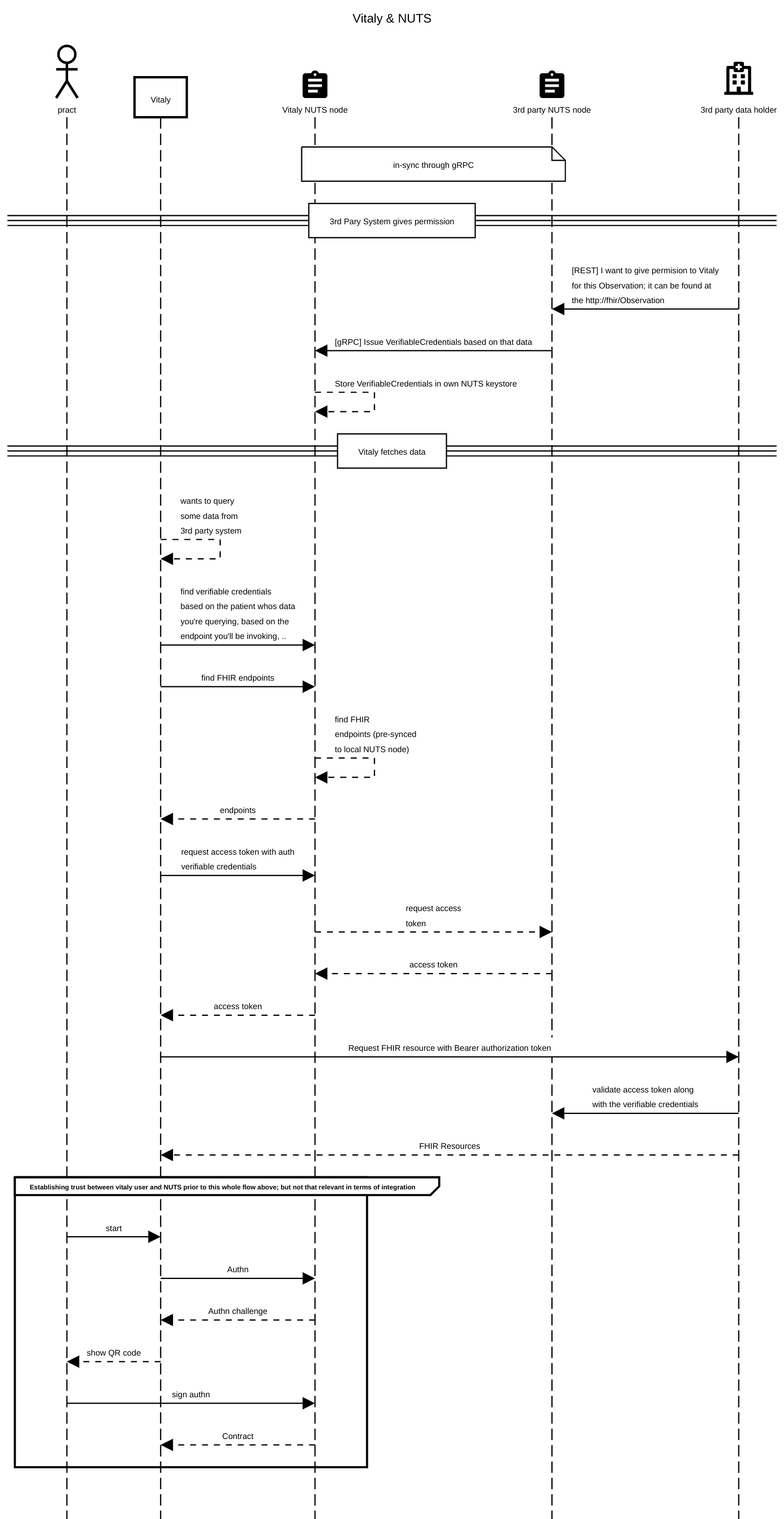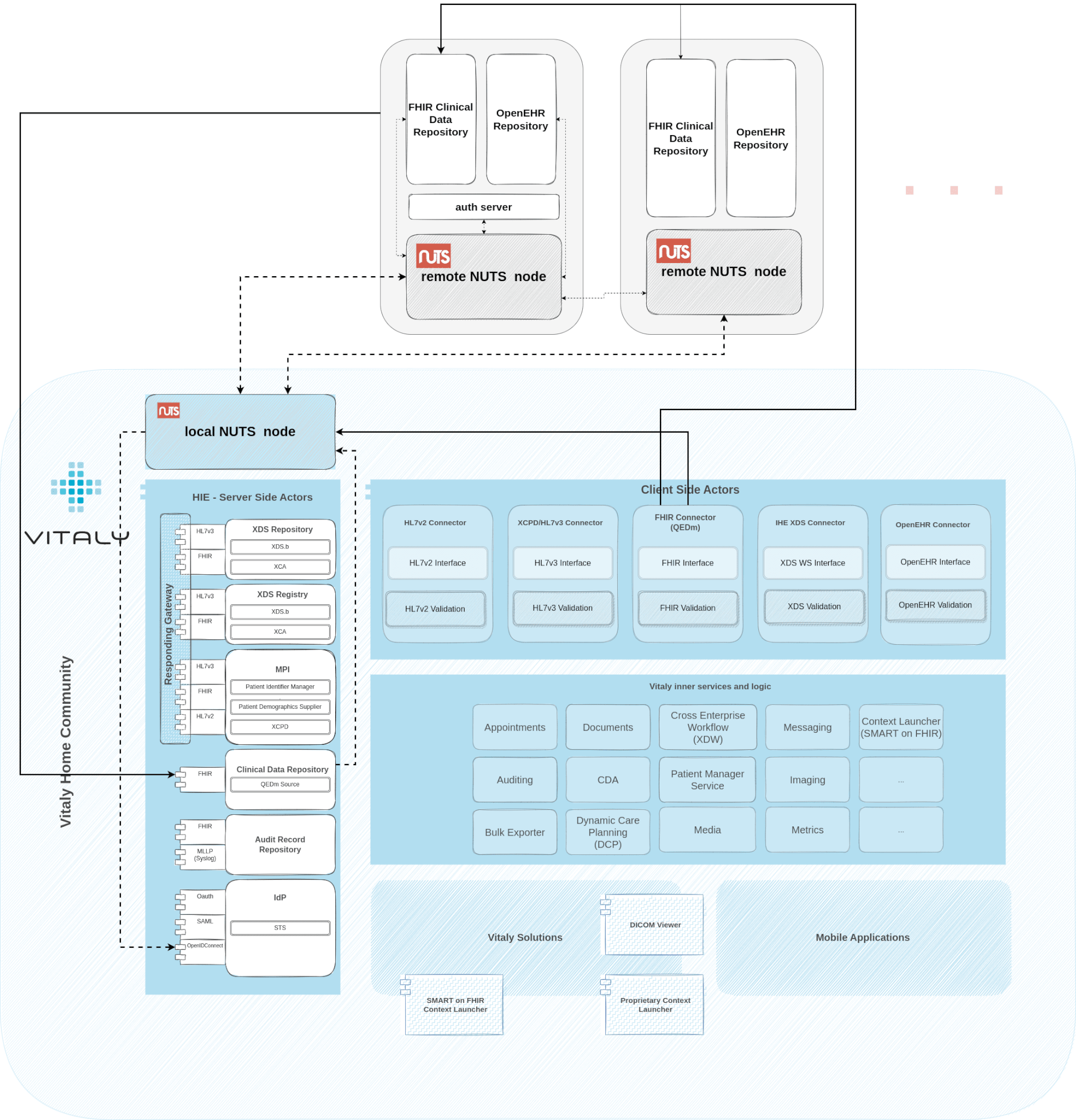Our strong presence in the Netherlands market forces us to stay up to date with new development that is happening in the ecosystem, and lately, there’s been a big shift happening towards a decentralised infrastructure called NUTS. It’s not really new per-se, as the initial position paper was written in 2018, but that in the digital health years means it is still quite new.
In short – NUTS is a joint initiative by healthcare software suppliers to develop an open-source protocol that regulates access to healthcare data.
How does it work? Well, it’s based on W3C Verifiable Credentials Data Model. Whenever clinical data is exchanged, the one sharing it creates a unique key that tells you:
- who is allowed to view the data,
- what can be viewed and
- where the actual data can be found.
That key is then transferred to the intended recipient of that clinical data (i.e. specialist) – or rather to his NUTS node (NUTS nodes are decentralized.. each system has one*).
When the person (i.e. specialist) is trying to access that data, all restrictions are verified and data can successfully be viewed exactly by the person and in the way intended. Furthermore, the patient can know exactly when the unique key was used and can even retract the permission and thus manage authorizations (authorization credentials, i.e. consents) for his clinical data.
It’s a way how nuts enable a secure and safe exchange of clinical data entirely in the control of the patient or the referrer.
Emphasis on the secure and less on the ‘exchange’. The ‘exchange’ part has been solved by many already and can already be taken for granted, making it secure in the very foundation of the standard and the patient having total control of his or her data – well, that’s new and very much needed.
Not trying to say other initiatives and standards don’t have this built-in, but I think the difference here is that this open standard is all about that, whereas others have security and privacy as an add-on and perhaps up to the implementer to implement properly. But with NUTS.. well, you can’t spell NUTS without security, can you! (I know, I know..)
How it works with Vitaly
Our solutions are all about the data and how to leverage data to support the use cases we are covering. So naturally, without the data exchange – without data going from our platform as well as obtaining data from other systems – our solutions can’t function properly and can’t achieve their true potential.
And NUTS being all about secure data exchange, we naturally have to place it at the very core of all transactions that are happening.
Whenever our system wants to obtain data from other sources (other EMRs, other HIEs, FHIR servers, OpenEHR repos, ..), the following happens:
First, 3rd party FHIR server/system (data holder) needs to issue credentials (VerifiableCredentials = authorization credentials, i.e. consent) for data to our solution (our local NUTS node); pieces of information in there are: who can view data, what data can be viewed and where that data is available.
All these three pieces of information are then signed and represent a “key” created by their (data holder’s) keystore. That key is stored within our keystore (via NUTS gRPC syncing).
Once our solution tries to fetch the data we were given permission for (given VerifiableCredentials), the key is checked, as well as the identity of our solution. If all checks out (nothing has been tampered with, and we are actually allowed to see the data, as per VerifiableCredentials), we can fetch that data from the 3rd party FHIR server.
Consent is ensured. If anything is tempered, it automatically prevents data sharing. It’s secure. It’s seamless. It’s audited. It’s built-in. It’s magic.

NUTS network
As mentioned, NUTS is decentralized. Each system or each organisation have their own NUTS node that, together with others in the ecosystem, forms a network of these little, powerful secure blocks that build a foundation for secure data sharing. Those nodes communicate with one another following gRPC, which is a modern open-source high-performance Remote Procedure Call (RPC) framework that can run in any environment.
You set up a local NUTS node and connect it to all other nodes in the environment. NUTS nodes talk to one another following the gRPC so you only care about integrating/talking to your own NUTS node, whereas the synchronization between NUTS nodes is happening automagically by NUTS nodes themselves.
Integration with your NUTS node is RESTful-based and uses the w3c vc-data-model. For example, you use REST interactions with NUTS for the following things:
- issuing authorizations (authorization credentials) to someone else to view the data within your system,
- fetching access-token for accessing the data in a 3rd party system,
- validating an access token,
- searching for endpoints where some specific data is available,
- finding authorizations (authorization credentials) issued to you,
- .…


